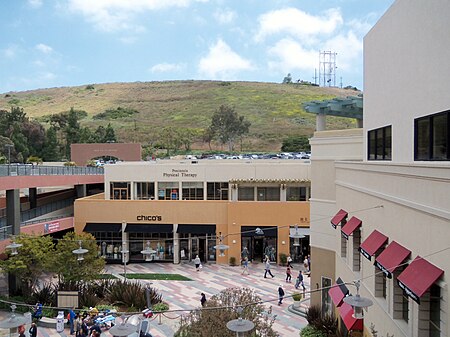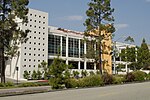Rolling Hills Estates, California
1957 establishments in CaliforniaCities in Los Angeles County, CaliforniaIncorporated cities and towns in CaliforniaPalos Verdes PeninsulaPopulated places established in 1957 ... and 2 more
South Bay, Los AngelesUse mdy dates from July 2023

Rolling Hills Estates is a city in Los Angeles County, California, United States. On the northern side of the Palos Verdes Peninsula, facing Torrance, Rolling Hills Estates is mostly residential. Incorporated in 1957, Rolling Hills Estates has many horse paths. The population was 8,067 at the 2010 census, up from 7,676 at the 2000 census. In 2018, the population rose to 8,141, and the 2020 census counted 8,280 residents.
Excerpt from the Wikipedia article Rolling Hills Estates, California (License: CC BY-SA 3.0, Authors, Images).Rolling Hills Estates, California
Elkridge Drive,
Geographical coordinates (GPS) Address Nearby Places Show on map
Geographical coordinates (GPS)
| Latitude | Longitude |
|---|---|
| N 33.773611111111 ° | E -118.36083333333 ° |
Address
Elkridge Drive 4704
90275
California, United States
Open on Google Maps






